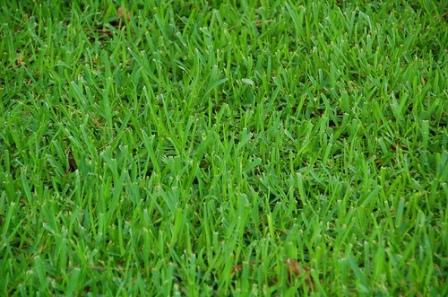|
Green Lawn Care for Green LivingWe Americans love our lawns, and are a bit picky about lawn care. They provide a great place to play sports, a spot for the kids to run and tumble, a picnic area, and a place to practice our putting. Lawns are a source of pride, they add to the beauty of our homes, and they reduce the reflective heat in our cities. On a hot summer day, a lawn can be 10 to 14 degrees cooler than exposed soil, and 30 degrees cooler than concrete or asphalt. And our lawns improve our air quality; a 50 by 50 square foot well maintained turf area can produce enough oxygen to meet the needs of a family of 4.

So if lawns do so many great things – why are we often made to feel guilty about having one? Why do some people preach that lawns are bad for the environment? And why do some local governments pass laws restricting our ability to have and maintain lawns? It all boils down to responsibility. There are responsible lawn owners and there are irresponsible lawn owners.
Let’s talk about responsible lawn ownership. Responsible lawn ownership means maximizing your lawn’s benefits while minimizing the negative environmental impacts. It really is easy – if we commit to being responsible lawn owners and using responsible lawn care practices.
The building blocks for responsible lawn care: Preparation and planning Smart fertilizer use Integrated weed and pest control Correct mowing practices Water wise principles
Preparation and planning
Just like with any project, planning and preparing for your lawn is the most important step. Determine how much lawn you really need…see the landscape design page for some thoughts on this process. You need to decide what you really want from your lawn, and design it based on your true needs. Many people make the mistake of planting turf areas just because they don’t know what else to put there. Trust me, there are lots of alternatives…the entire yard does not need to be turf. Once you have designed your perfect lawn area, prepare for it. The better job you do preparing the soil, the easier and more environmentally friendly it will be to maintain it. Determine your soil type – in most cases you will need to add plenty of organic matter into the soil (ideally from your own compost pile – if you don’t have enough, then bring in plenty). You can learn more about soils here. Finally, decide what type of turf to use. We’ve come a long way with low water use turf varieties that are best suited for your area; your local agricultural extension office is a good source for recommendations. 
Smart fertilizer use
If you have done a great job preparing your soil, you have already taken the most important step in reducing your spending and use of fertilizers. Your grass will use a lot of Nitrogen (that is the first number on the fertilizer label). Nitrogen is what promotes the green growth – in other words the stuff you have to mow. If you overuse fertilizers, you will have to mow more often. The trick is to apply just enough fertilizer to keep the lawn green and lush without stimulating too much growth. This is best accomplished with either organic fertilizers or slow release fertilizers. These may cost more per pound – but if you don’t have to apply as often they can really save you money. I have had great results using Milorganite which is a sludge based organic fertilizer from Milwaukee. Integrated Weed and Pest Control
A healthy turf is best able to resist weeds and pests. So your planning, soil preparation, and smart fertilizing will go a long way to preventing weed and pest problems. If you also accept that your grass does not need to be 100% weed and pest free that will further reduce your need to react to weeds and insects. In commercial agriculture there is a concept called Integrated Pest Management (IPM). One of the concepts of IPM is determining the acceptable threshold of pests. Grubs are one of the most common lawn pests. They feed on the roots and can cause considerable damage in a very short period of time. Fortunately there is a very effective natural control of grubs, Milky Spore. Milky Spore is actually a bacterial disease specific to grubs. It is not harmful to people, pets, natural predators, or the environment. Weeds are best controlled by a thick lush turf, accompanied by the occasional hand pulling. If your weed problem goes beyond this level, consider using a weed preventative. These chemicals tend to be safer and have less impact on the environment than traditional weed killers like 2,4D. Correct Mowing PracticesMow high. Most turf varieties will perform better and prevent weeds better if they are mowed higher (Bermuda is the exception). If you mow regularly it is best to get rid of the catcher, and let the clippings go back to the soil. If you have let the grass get away from you, then use the clippings in your compost pile. Most of have a tendency to keep our lawns too short. You will make your lawn care much easier and environmentally friendly with a higher cut.
Water Wise PrinciplesIf you follow the above 4 practices, you have already reduced your lawn’s need for water. Some great ideas for being water wise with your lawn care can be found here. Keep your sprinkler system tuned, and check it frequently for waste. Water deeply and infrequently. And don’t allow the water to run off. There is no need to feel guilty about your grass. Lawns are an important and beneficial part of our environment. Just commit to responsible lawn ownership and responsible lawn care.
Learn more about lawn care and being a responsible lawn owner with water wise practices
|
